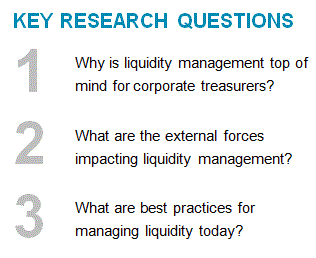 | The third in a series of reports commissioned by HSBC and written by Celent examines the external forces impacting corporate liquidity management and why effective liquidity management is critical for companies to “stay afloat” in these turbulent times. |
Simply put, the goal of liquidity management is to align sources and uses of funds across operating entities, maximizing returns on excess cash while reducing reliance on external funding. Historically a placid section of corporate treasury, liquidity management has recently begun to assume increasing importance as a result of external forces.
The report examines four key external forces impacting liquidity management:
- Regulatory environment.
- Economic influences.
- Industry initiatives.
- Technology evolution.
The most significant external factor is regulation, with Basel III changing the way banks structure their balance sheets and the relationship between business customers and their banking partners.
“Optimizing corporate treasury management demands a robust and efficient liquidity management and investment approach,” says Patricia Hines, a senior analyst with Celent’s Banking practice and author of the report. “But with external forces causing substantive and permanent shifts in available options, corporations need to have the technology infrastructure in place to manage their liquidity and investments with tighter risk governance.”
This 24-page report contains 8 figures.






